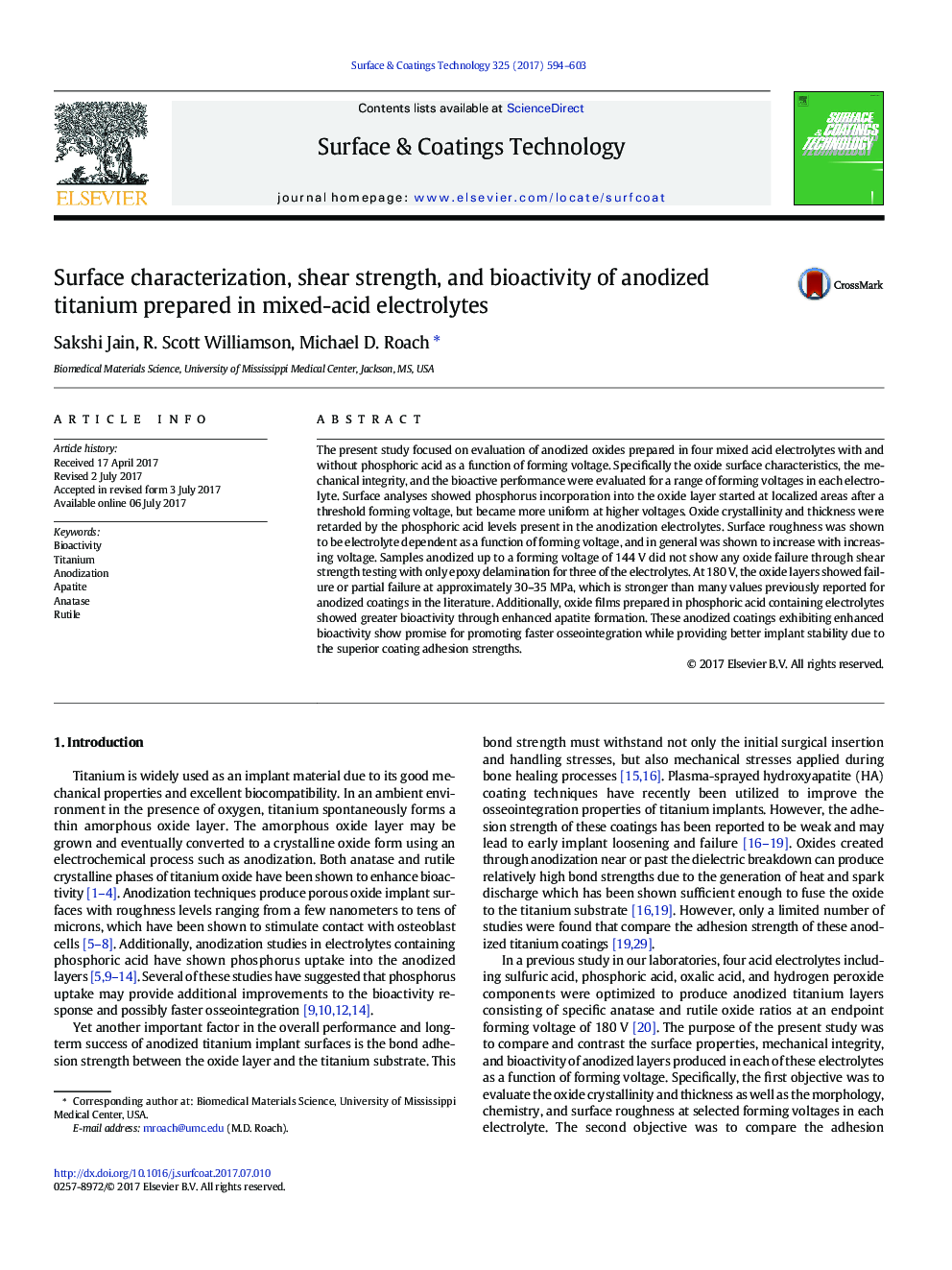| Article ID | Journal | Published Year | Pages | File Type |
|---|---|---|---|---|
| 5464851 | Surface and Coatings Technology | 2017 | 10 Pages |
Abstract
The present study focused on evaluation of anodized oxides prepared in four mixed acid electrolytes with and without phosphoric acid as a function of forming voltage. Specifically the oxide surface characteristics, the mechanical integrity, and the bioactive performance were evaluated for a range of forming voltages in each electrolyte. Surface analyses showed phosphorus incorporation into the oxide layer started at localized areas after a threshold forming voltage, but became more uniform at higher voltages. Oxide crystallinity and thickness were retarded by the phosphoric acid levels present in the anodization electrolytes. Surface roughness was shown to be electrolyte dependent as a function of forming voltage, and in general was shown to increase with increasing voltage. Samples anodized up to a forming voltage of 144Â V did not show any oxide failure through shear strength testing with only epoxy delamination for three of the electrolytes. At 180Â V, the oxide layers showed failure or partial failure at approximately 30-35Â MPa, which is stronger than many values previously reported for anodized coatings in the literature. Additionally, oxide films prepared in phosphoric acid containing electrolytes showed greater bioactivity through enhanced apatite formation. These anodized coatings exhibiting enhanced bioactivity show promise for promoting faster osseointegration while providing better implant stability due to the superior coating adhesion strengths.
Related Topics
Physical Sciences and Engineering
Materials Science
Nanotechnology
Authors
Sakshi Jain, R. Scott Williamson, Michael D. Roach,
